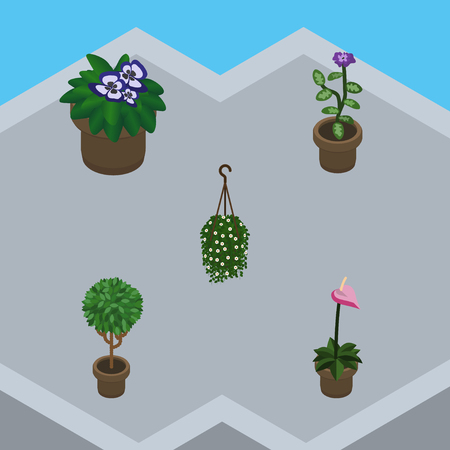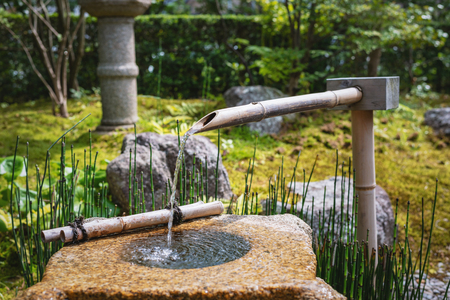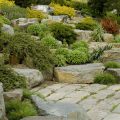1. Drought-Tolerant Plants for Rock Gardens
When designing a rock garden that’s both beautiful and low-maintenance, choosing drought-tolerant plants is key. These plants not only conserve water but also thrive in the well-drained soil conditions typical of rock gardens. Plus, they bring color, texture, and year-round interest without needing much care.
Why Choose Drought-Tolerant Plants?
Rock gardens often mimic dry, rugged natural environments, which makes them perfect for plants that naturally grow in arid or semi-arid regions. By using drought-tolerant varieties, you reduce your need for frequent watering, fertilizers, and pruning—saving time and resources while still enjoying a vibrant landscape.
Top Plant Picks for Dry Rock Gardens
Below is a list of popular drought-tolerant plants that pair beautifully with rocks and gravel:
| Plant Name | Description | Sun Requirements |
|---|---|---|
| Succulents (e.g., Echeveria, Aloe) | Fleshy leaves store water; come in many colors and shapes | Full sun to partial shade |
| Sedum (Stonecrop) | Low-growing ground cover with star-shaped flowers | Full sun |
| Lavender | Fragrant herb with purple blooms; attracts pollinators | Full sun |
| Thyme | Aromatic herb that doubles as ground cover | Full sun |
| Yucca | Dramatic spiky foliage; very hardy in dry climates | Full sun |
Tips for Planting in Rock Gardens
- Use sandy or well-draining soil to prevent root rot.
- Add mulch like pea gravel or crushed granite to retain moisture and control weeds.
- Group plants with similar water needs together.
Selecting the right drought-tolerant plants not only enhances the visual appeal of your rock garden but also ensures it remains easy to care for throughout the seasons.
2. Using Natural Stone to Create Visual Interest
Natural stone is one of the most versatile and low-maintenance materials you can use in a rock garden. By combining different types of stone—like boulders, river rocks, and crushed gravel—you can add depth, contrast, and texture that give your landscape a unique, eye-catching appeal.
Choosing the Right Stones for Your Rock Garden
The key to creating visual interest lies in using a variety of stone sizes, shapes, and colors. Here are some common natural stones used in American rock gardens:
| Type of Stone | Description | Best Use |
|---|---|---|
| Boulders | Large, heavy stones that act as focal points | Centerpieces or anchor points in garden beds |
| River Rocks | Smooth, rounded stones available in various sizes | Accents along pathways or around plant bases |
| Crushed Gravel | Small, angular pieces that compact well | Ground cover or for defining paths and borders |
How to Arrange Stones for Maximum Impact
The way you position your stones can make a big difference in how natural and appealing your rock garden looks. Here are some simple tips to follow:
- Create Layers: Use larger boulders at the back or center, medium-sized stones around them, and fill gaps with smaller gravel to build depth.
- Group Naturally: Avoid placing rocks in perfect lines—group them as they would appear in nature.
- Add Contrast: Mix light-colored gravel with darker stones or vice versa to highlight different areas.
- Use Texture: Combine smooth river rocks with rougher stones to create interesting textures throughout the garden.
Pro Tip: Let Nature Be Your Guide
If youre not sure how to begin, take inspiration from natural landscapes like dry creek beds or desert scenes. Observe how rocks are clustered and how they interact with their surroundings. Mimicking these natural arrangements can help you design a cohesive and relaxing outdoor space.
Low-Maintenance Bonus
Natural stone doesn’t require watering, pruning, or fertilizing—making it perfect for homeowners who want a beautiful yard without the constant upkeep. Once placed properly, these elements will last for years with minimal attention.
Quick Checklist for Using Natural Stone
- Select a mix of stone types and sizes for variety
- Create focal points with large boulders
- Add crushed gravel for structure and drainage
- Mimic nature when arranging groups of rocks
- Use contrasting colors and textures for visual appeal
With just a few thoughtful choices and a bit of creativity, you can transform your yard into a stunning rock garden thats both stylish and easy to maintain.

3. Incorporating Mulch and Ground Covers
Adding mulch and ground covers to your rock garden is a smart way to keep your landscaping low-maintenance while enhancing its natural beauty. These elements help suppress weeds, retain soil moisture, and provide a polished look that complements the rugged charm of stones and boulders.
Benefits of Using Gravel Mulch
Gravel mulch is a top choice for rock gardens because it blends seamlessly with rocks and requires very little upkeep. Unlike organic mulches like bark or wood chips, gravel doesnt decompose or need to be replaced often. It also improves drainage, which is ideal for drought-tolerant plants.
Why Choose Gravel Mulch?
| Benefit | Description |
|---|---|
| Weed Control | Creates a barrier that reduces weed growth |
| Moisture Retention | Helps keep soil cool and moist during hot weather |
| Low Maintenance | Doesnt need to be replaced frequently |
| Visual Appeal | Adds texture and color contrast to the garden |
Hardy Ground Covers for Rock Gardens
Ground cover plants are perfect companions for rocks. They spread easily, fill in gaps between stones, and require minimal care once established. One popular option is creeping thyme—a fragrant, flowering plant that thrives in sunny spots and tolerates dry conditions.
Top Ground Cover Choices
| Plant Name | Sun Requirements | Water Needs | Special Features |
|---|---|---|---|
| Creeping Thyme | Full Sun | Low | Fragrant, flowers in summer, attracts pollinators |
| Sedum (Stonecrop) | Full Sun to Part Shade | Low | Drought-tolerant, colorful foliage, blooms late summer |
| Dymondia | Full Sun | Low to Moderate | Tight growth habit, silvery-green leaves, good for pathways |
Tips for Success
- Prepare the soil: Remove weeds and add a layer of landscape fabric before applying gravel mulch.
- Select drought-tolerant plants: Choose ground covers that thrive in your USDA Hardiness Zone.
- Space wisely: Plant ground covers with enough room to spread naturally over time.
- Maintain minimally: Once established, these ground covers will need little more than occasional trimming or weeding.
A thoughtful combination of gravel mulch and hardy ground covers not only boosts the appearance of your rock garden but also cuts down on time spent watering and weeding—making it an ideal solution for busy homeowners or those seeking a sustainable landscape design.
4. Creating Pathways and Borders with Rocks
One of the most effective ways to give your rock garden structure while keeping it low-maintenance is by adding walkways and borders made from natural stone materials. These elements not only guide foot traffic but also define different zones in your garden, helping it look polished and intentional without requiring much upkeep.
Why Use Rocks for Pathways and Edging?
Rocks like flagstone, cobblestone, and pea gravel are durable, weather-resistant, and blend beautifully with outdoor settings. Unlike traditional lawns or high-maintenance flower beds, these hardscape materials require little care beyond occasional weeding or sweeping. Theyre perfect for homeowners who want a tidy yard without constant work.
Popular Rock Materials for Walkways & Borders
| Material | Description | Best For |
|---|---|---|
| Flagstone | Flat, irregularly shaped stones that create a natural stepping pattern. | Rustic garden paths and patios |
| Cobblestone | Rounded stones that form a more classic or old-world look. | Formal pathways or edging around flower beds |
| Pea Gravel | Small, smooth stones that are easy to spread and walk on. | Casual walkways and filler between larger stones |
Design Tips for Rock Walkways and Edges
- Lay a weed barrier: Before installing rocks, use landscape fabric to prevent weeds from growing through the gaps.
- Frame with metal or stone edging: This keeps gravel or small rocks from spilling into your lawn or planting areas.
- Mix textures: Combine different types of rock to create visual interest along paths or borders.
- Add lighting: Solar-powered path lights can enhance safety and ambiance at night without increasing maintenance.
Pro Tip:
If you live in an area with heavy rainfall, choose rocks that allow water to drain easily—like pea gravel—to avoid puddles and erosion issues.
Easy Maintenance Plan
A quick sweep every couple of weeks and occasional refilling of gravel is usually all it takes to keep rock paths looking great. Compared to grass mowing or replanting flowers every season, this setup saves time and energy while still looking beautiful year-round.
Create clean lines, guide movement through your yard, and enjoy long-lasting beauty by incorporating stone pathways and borders into your rock garden design.
5. Adding Accents and Features to Elevate Design
Rock gardens are already known for their low-maintenance appeal, but adding a few carefully chosen accents can take your outdoor space from simple to stunning—without making upkeep harder. The key is choosing features that blend naturally with your rock garden’s aesthetic while enhancing its functionality and personality.
Water Features: Serene and Stylish
Incorporating water elements like a small pond, bubbling fountain, or even a stone basin can add soothing sound and movement to your garden. These features don’t require much maintenance when designed properly. A solar-powered fountain, for example, offers an eco-friendly and low-effort way to bring life into your landscape.
Low-Maintenance Water Feature Ideas
| Feature | Description | Maintenance Level |
|---|---|---|
| Solar-Powered Fountain | No wiring needed; runs on sunlight | Low |
| Mossy Stone Basin | Collects rainwater naturally | Very Low |
| Pebble Stream with Pump | Circulates water over rocks | Moderate (cleaning pump) |
Sculptures: Personal Touches that Last
Sculptures add character and a sense of permanence to your rock garden. Whether you prefer modern metal art, whimsical animal figures, or classic stone statues, placing them strategically among your rocks creates visual interest without extra effort.
Tips for Choosing Garden Sculptures
- Material Matters: Choose weather-resistant materials like stone, bronze, or powder-coated steel.
- Scale Appropriately: Select sizes that match the scale of your garden beds and surrounding plants.
- Keep It Simple: One or two well-placed pieces are more effective than cluttering the space.
Create a Dry Riverbed for Natural Flow
A dry riverbed made of smooth pebbles or gravel mimics the look of flowing water and adds depth to your landscape design. It also helps with drainage and guides rainwater away from plant roots. Use larger rocks along the edges to enhance the natural appearance.
Benefits of Dry Riverbeds in Rock Gardens
- Mimics nature without requiring water flow
- Adds texture and visual movement to flat areas
- Doubles as a functional drainage solution
You don’t have to sacrifice ease of care for creativity. By adding thoughtful accents like water features, sculptures, and dry riverbeds, you can create a rock garden that reflects your style while keeping maintenance minimal.


